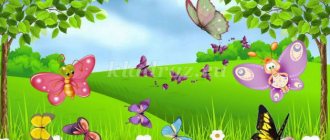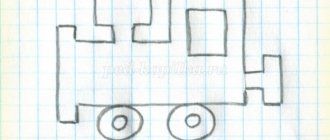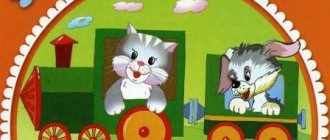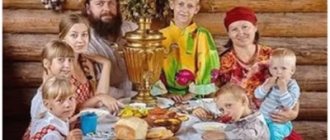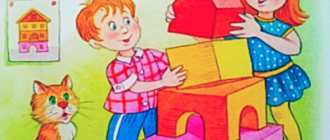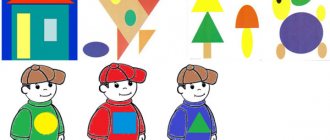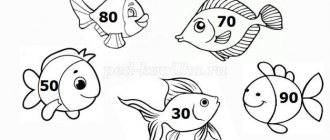Psychological and pedagogical foundations of the development of children of middle preschool age
Middle age is the most important period in the development of a preschooler.
The physical capabilities of children have increased: their movements have become much more confident and varied. In the middle group, it is especially important to establish a reasonable motor mode. The middle preschooler needs meaningful contacts with peers. Children communicate about toys, joint games, and common affairs. Their verbal contacts become longer and more active. Children easily unite into small subgroups based on common interests and mutual liking.
The main activity of middle-aged children is play, and productive activities also appear: drawing, modeling, designing. In story games, children easily use various substitute objects (for example, a cube as soap). This develops the child's fantasy and imagination.
In play, the child discovers for the first time the relationships that exist between people; the child himself can fulfill one or another role. The child’s mental activity develops in play. Within the play activity, educational activity also begins to take shape, which later becomes the leading activity. A preschooler begins to learn by playing - he treats learning as a kind of role-playing game with certain rules.
In the middle group, preference is given to the play structure of the entire lifestyle of children. Children participate in a variety of games throughout the day.
All types of classes either take the form of a game or contain game situations and actions. New features appear in the communication of middle preschoolers with the teacher. Children strive for cognitive, intellectual communication with adults. This is manifested in numerous questions from children to the teacher: “Why?”, “Why?”, “For what?”.
Children’s ability to establish the simplest connections and relationships between objects awakens interest in the world around them. The teacher’s friendly, interested attitude towards children’s questions and problems, the willingness to discuss them “as equals” with children helps, on the one hand, to support and direct children’s cognitive activity in the right direction, on the other hand, it strengthens the trust of preschoolers in adults. This promotes a sense of respect for elders.
A preschooler in his fifth year of life is highly active. This creates new opportunities for the development of independence in all areas of his life. There is an awakening of interest in the rules of behavior. The main thing is to anticipate the actions of children and orient them in advance to the correct behavior.
Middle-aged children are highly emotional and express their feelings clearly and directly. The teacher awakens the emotional responsiveness of children, directs it towards sympathy with peers and basic mutual assistance.
Children's aesthetic senses develop. They notice the beauty of nature, the sound of music. An adult helps the child with this. An attentive, caring attitude towards children, the ability to support their cognitive activity and develop independence, and the organization of various activities form the basis for the proper upbringing and full development of children in the middle group of kindergarten.
The teacher gradually develops the gaming experience of each child, helps to discover new opportunities for playful reflection of the world, awakens interest in creative manifestations in play and playful communication with peers.
A preschool child does not have sufficient abilities to connect temporal, spatial and causal sequences with each other and include them in a broader system of relationships. He reflects reality at the level of ideas, and these connections are acquired by him as a result of direct perception of things and activities with them.
When classifying, objects or phenomena are combined based on common characteristics into a class or group, for example: all people who know how to drive a car, etc. Classification forces children to think about the underlying similarities and differences between different things as they need to make inferences about them.
